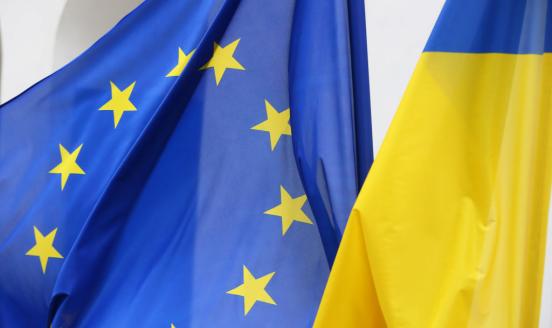Can virtual currencies challenge the dominant position of sovereign currencies?
Marek Dabrowski and Lukasz Janikowski analyse why private money has historically failed in competition against sovereign currencies and what it means
This blog post was written for the FinReg Blog of the Duke Law Global Financial Markets Center.
The short answer is most likely no, at least not in the near future. Despite the relative “success” of Bitcoin and other virtual currencies (VCs) like Ethereum and Ripple, their role in the economy is minimal. On November 27, 2018, the total market capitalization of all VCs was slightly over US$ 121 billion[3], while broad money (M3) in the US approached US$ 14 trillion at the end of 2017.[4] In addition, sovereign currencies enjoy significantly higher transaction volumes compared to VCs.
The two dominant streams of public discussion on VCs concern their technical details (how they are designed and operated) and their regulatory framework – that is, the legal conditions of their acceptance and use, which differ significantly between jurisdictions. Switzerland, for example, takes a liberal approach, while China is more restrictive[5]. The economic characteristics of VCs are less frequently analyzed but hold the key to understanding their possibility for further expansion.
From an economic point of view, VCs are not novel. Rather, they are just the latest form of private money. Private money (or currency) is a liability issued by a private entity such as a bank or other financial institution, non-financial corporation, non-profit private institution, or individual, which is accepted as a means of payment by other economic agents. However, this term is also sometimes applied to similar liabilities issued by subnational or municipal public authorities or publicly owned banks. Given such broader interpretations, one should speak about decentralized money rather than private money.
In modern economic history, private money was a popular phenomenon between the end of the 18th and the beginning of the 20th century, particularly in various parts of the British Empire and the US, and was also associated with the era of “free banking” – that is, when banks were subject to relatively light or no regulation and had a right to issue notes serving as a means of payment for the general public. Usually, such private money existed in parallel with sovereign money, like coins minted by the government, or notes from government-owned banks (which, as in the case of the Bank of England, then gradually assumed the role of central bank).
Several factors contributed to the expansion of private money in the early industrial era. First, there was a rapid increase in demand for money and credit, which could not be met by traditional payment means (such as gold or silver coins minted by the government). The rapid expansion of banking and other financial services also played a role. Second, the dominant free-market economic school largely supported free banking and private money issuance. Interestingly, Adam Smith was among their advocates[6]. The only restrictions he proposed were a ban on issuing small-denomination notes by private banks and the obligation of immediate and unconditional redemption of issued notes on demand. Third, in some instances, there was no political consensus to establish a centralized monetary authority and banking regulation; this was the case in the US after the mandate of the Second Bank of United States expired in February 1836[7].
In the middle of the 19th century, countries began establishing central banks and gradually granted them regulatory powers over private commercial banks. These central banks became the lender of last resort and the central monetary authority with dominant, or even exclusive, rights to issue national currency. The Bank Charter Act of 1844[8] (which gave the Bank of England nearly full control over issuing banknotes in the UK[9]) and the US National Banking Act of 1863 (of similar content but without establishing the Federal Reserve, which later happened in 1913) can be seen as important milestones in establishing contemporary sovereign monopolies on issuing national currencies and gradually closing the era of private money and free banking. The idea of free banking and private money enjoyed a brief renaissance when it was promoted by Friedrich August von Hayek[10] and his followers in the 1970s – a period of high inflation in several advanced economies – but it failed to garner broader political support.
For a complete picture, it is necessary to consider the various episodes of money surrogates, such as scrips, promissory notes, IOUs,[11] barter transactions, and bilateral and multilateral clearing accounts, among others, which were designed to avoid liquidity constraints. These were used under special circumstances – like business activities in remote locations, bank closures in periods of financial crisis[12], wars and other conflicts, conducting trade operations in the absence of currency convertibility, and circumventing hard budget constraints by state-owned enterprises in the early stages of post-communist transition[13]. However, these surrogates cannot be considered fully-fledged money and do not offer a good benchmark for comparison with VCs.
Why, historically, did private money fail in competition against sovereign currencies?
There are two major advantages of sovereign currencies: network externalities and the ability to address the problems of information asymmetry and adverse selection.
Network externality means a given currency is broadly accepted by other economic agents on a given market and performs all functions of money: a means of payment, a unit of account, and a store of value. This allows the creation of a sufficiently deep and liquid financial market for various instruments.
History shows that this was not possible in an environment where several private currencies circulated in parallel and competed with each other. The multiplicity of private currencies meant higher transaction costs for all economic agents in a given territory. Even if they were denominated in the same currency unit (for example, pound or dollar), they were traded at various discount rates depending on the reputation and reliability of their issuers – that is, there were de facto exchange rates between them, sometimes volatile and unpredictable ex ante.
Sovereign currencies eliminated this multiplicity (not entirely because of the use of foreign currencies) and helped to create single domestic markets for goods and services in individual monetary jurisdictions. This was an important network externality for all economic agents—using the same currency for purchasers, suppliers, creditors, debtors, and tax authorities, among others.
The problem of information asymmetry (where the provider of financial services has an informational advantage over its clients given the inability of the latter to fully assess the quality of a purchased product, including private currency) is inherently present in financial intermediation. This creates the potential for excessive risk taking at the client’s cost and even a risk of intentional abuse of rules and fraud. Furthermore, despite the arguments of Smith and Hayek, free banking competition does not always lead to the selection of the best products (in this case, private money) and the best providers. Hence, the necessity to address the problem of information asymmetry and adverse selection[14] serves as an important argument in favor of the government regulation of financial services.
The same argument has often been used in favor of a government monopoly on issuing money, even if history offers a large number of abuses of such monopolies, mainly for fiscal reasons.[15] Eventually, the importance of having stable and trusted money for the proper functioning of the economy forced most countries to adopt the gold standard in the second half of the 19th century, which largely eliminated the discretionary monetary power of governments. After several modifications of the gold standard in the first half of the 20th century and its definite demise in the early 1970s[16] after a short period of higher inflation, the role of the stabilization mechanism was taken by central bank independence and publicly declared monetary policy rules like inflation targeting.
Looking at the technological characteristics of VCs, some of them (like Bitcoin) may eliminate at least part of the above-mentioned disadvantages of private money. The transparency of their functioning and the predetermined algorithm of their creation reduce information asymmetry and over-issuance risks. Future technical innovations can offer additional safeguards and reduce transaction costs. Expansion of trans-border digital retailing and services may also facilitate broader use of VCs.
However, one must be realistic about the prospects of VCs expansion. First, their exclusively digital form is a disadvantage. Demand for cash in major currency areas, such as the US dollar and Euro, is still high and even increasing[17]. Second, in most jurisdictions, governments and central banks are not ready to accept VCs as official legal tender – even if they relax regulation on their use as a financial investment instrument. This will limit their circulation and make them unlikely competitors to sovereign money. Third, the competitive nature of the VC market, that is, the continuous invention and launching of new projects, will prevent a dominant market position for any single VC. This will lead to a multiplicity of VCs and prevent any of them from enjoying the benefit of network externalities (similar to the US dollar or Euro).
In summary, VCs will not challenge the dominance of sovereign currencies and the monetary policies of central banks, especially in major currency areas. However, in extreme cases (such as during periods of hyperinflation, financial crisis, political turmoil, or war) they can become a means of currency substitution for individual economies.
[1] Non-Resident Fellow at Bruegel in Brussels, Fellow at CASE – Center for Social and Economic Research in Warsaw, Professor at the Higher School of Economics in Moscow,
[2] Economist at CASE – Center for Social and Economic Research in Warsaw
[3] See https://coinmarketcap.com
[4] See https://fred.stlouisfed.org/series/MABMM301USQ189S
[5] Dabrowski, Marek and Lukasz Janikowski (2018): “Virtual currencies and their potential impact on financial markets and monetary policy”. CASE Reports. No. 495, September. Available at http://www.case-research.eu/files/?id_plik=5637
[6] Smith, Adam (2005): “An Inquiry into the Nature and Causes of the Wealth of Nations.” Pennsylvania State University, An Electronic Classics Series Publication, p. 269 Available at https://eet.pixel-online.org/files/etranslation/original/The%20Wealth%20of%20Nations.pdf
[7] Frieden, Jeffry (2016): “Lessons for the euro from early US monetary and financial history”. Bruegel Essay and Lecture Series, 25 May 2016. Available at https://bruegel.org/wp-content/uploads/2016/05/essay_frieden_may16.pdf
[8] See https://www.legislation.gov.uk/ukpga/1844/32/pdfs/ukpga_18440032_en.pdf
[9] Even if, technically, a few commercial banks in Scotland and Northern Ireland continue to issue their own banknotes today, they remain under the full control of the Bank of England in this respect.
[10] Hayek, Friedrich A. (1990): “Denationalisation of Money: The Argument Refined”. Third Edition. The Institute of Economic Affairs, London. Available at https://mises.org/system/tdf/Denationalisation%20of%20Money%20The%20Argument%20Refined_5.pdf?file=1&type=document
[11] An acronym for “I owe you”, a sort of debt obligation paper.
[12] Champ, Bruce (2007): “Private Money in Our Past, Present and Future”. Federal Reserve Bank of Cleveland, 01 January. Available at https://www.clevelandfed.org/~/media/content/newsroom%20and%20events/publications/economic%20commentary/2007/ec%2020070101%20private%20money%20in%20our%20past%20present%20and%20future%20pdf.pdf
[13] Rostowski, Jacek (1994): “Interenterprise Arrears in Post-Communist Economies”. IMF Working Paper, No. 94/43, April. Available at https://papers.ssrn.com/sol3/papers.cfm?abstract_id=883501
[14] See Akerlof, George A. (1970): “The Market for ‘Lemons’: Quality Uncertainty and the Market Mechanism”. Quarterly Journal of Economics. Vol. 84, No. 3, pp. 488-500. Available at https://doi.org/10.2307/1879431; Stiglitz, Joseph E., and Andrew Weiss (1981): “Credit Rationing in Markets with Imperfect Information”. The American Economic Review. Vol. 71, No. 3 (June), pp. 393-410. Available at http://www.jstor.org/stable/1802787
[15] See Reinhart, Carmen M., and Kenneth S. Rogoff (2009): This Time Is Different. Eight Centuries of Financial Folly, Princeton University Press.
[16] Eichengreen, Barry (1998): Globalizing Capital. A History of the International Monetary System. Princeton University Press, Princeton, NJ.
[17] Jobst, Clemens, and Helmut Stix (2017): “Doomed to Disappear? The Surprising Return of Cash Across Time and Across Countries”. Centre for Economic Policy Research, London. Discussion Paper, DP 12327. September. Available at https://cepr.org/active/publications/discussion_papers/dp.php?dpno=12327#; Gros, Daniel (2017): “Implications of the Expanding Use of Cash for Monetary Policy”. CEPS Policy Insights. No. 2017/21, June. Available at https://www.ceps.eu/system/files/PI2017-21_ExpandingUseOfCash.pdf



